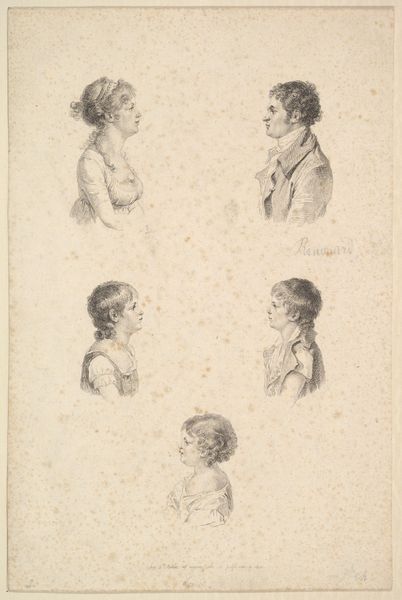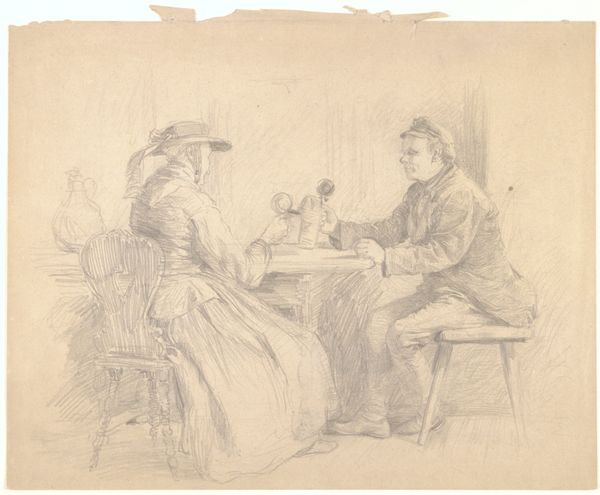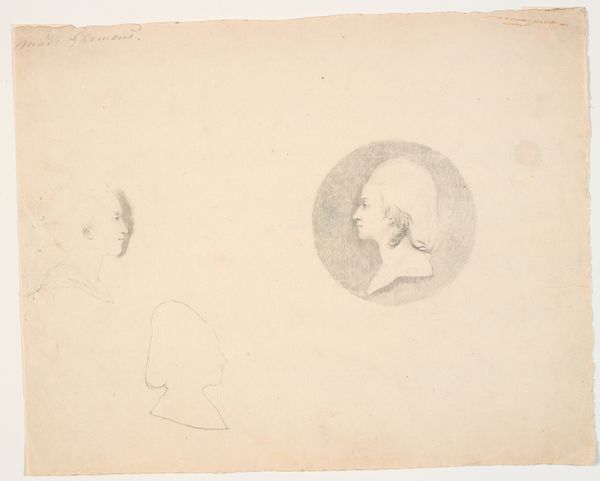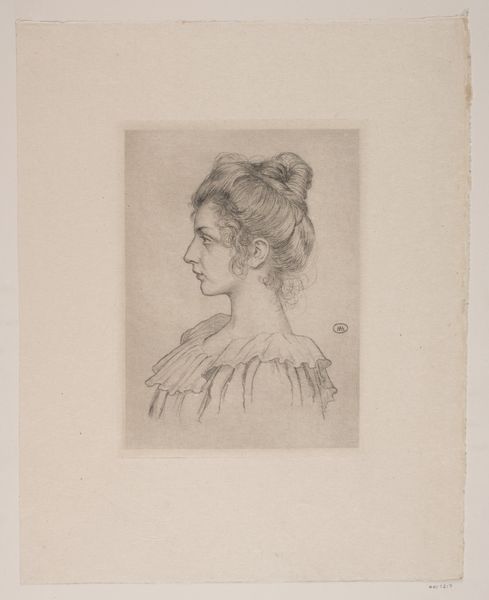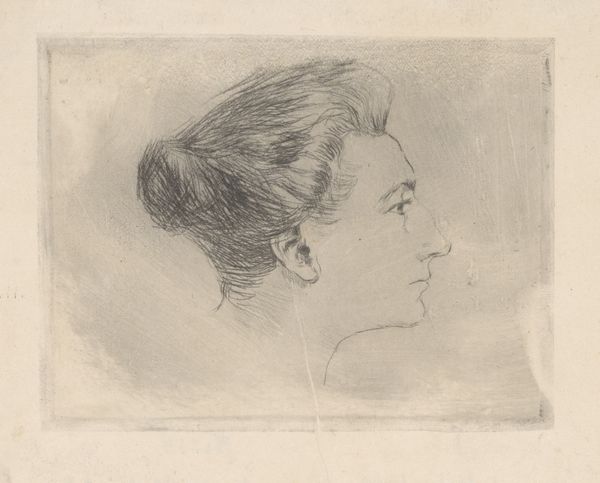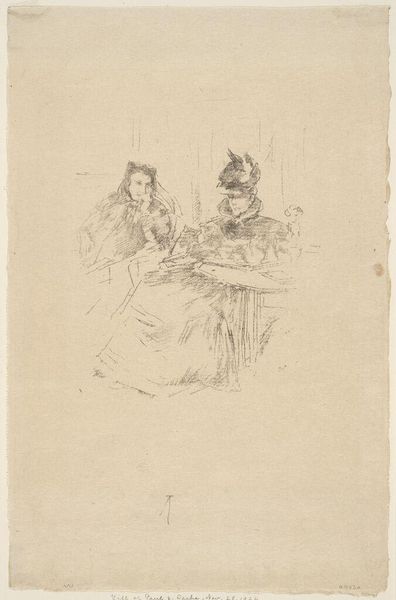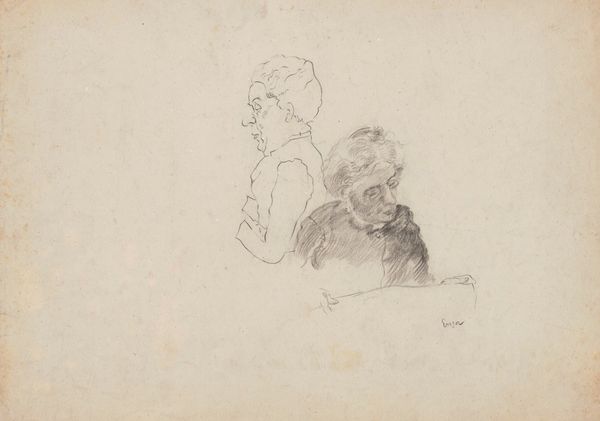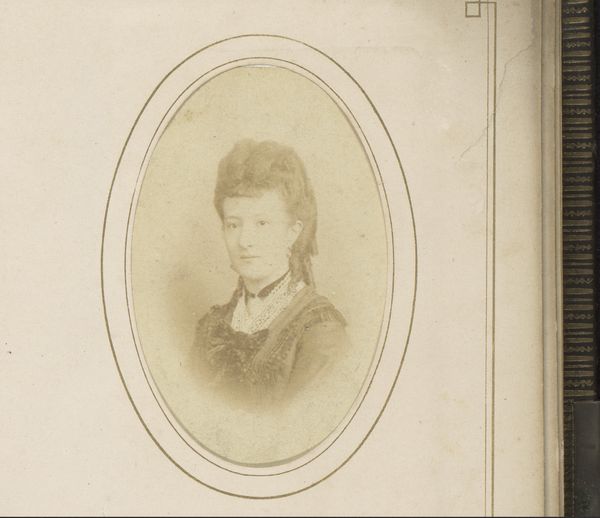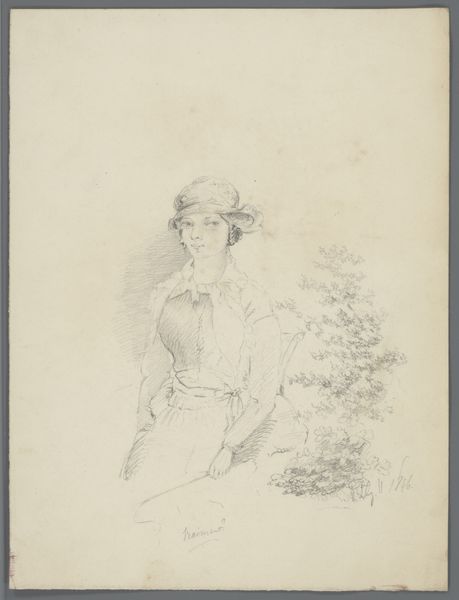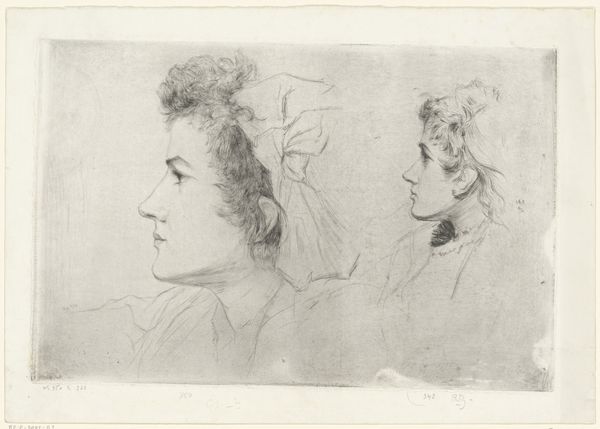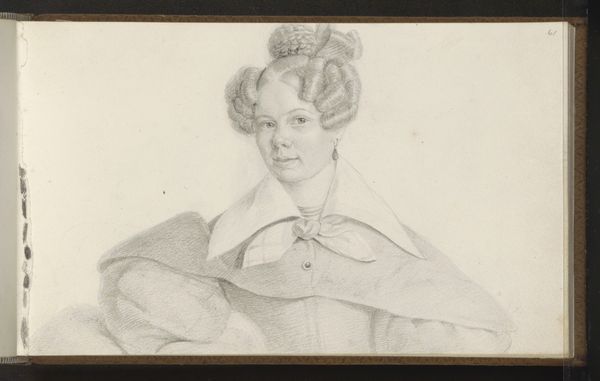
drawing, paper, pencil
#
portrait
#
pencil drawn
#
drawing
#
16_19th-century
#
pencil sketch
#
paper
#
pencil
Copyright: Public Domain
Editor: This drawing, "Bildnis eines Herren und einer Dame," artist unknown and undated, but residing here at the Städel Museum, uses pencil on paper to depict a man and woman. It’s the way the pencil barely caresses the paper that I find fascinating! What can you tell me about it? Curator: Look closely at the paper itself, its weave and possible origin. Was this paper a common material easily obtained or perhaps something finer, hinting at the sitters' social standing? Consider also the pencil—where was it sourced? What processes were involved in its production, in the 19th century? This is about accessing the means of representing status. Editor: So you're suggesting that the drawing materials themselves were chosen to project a certain image, reflecting societal norms regarding class and labour. It wasn't just the final portrait but also how it was crafted that mattered? Curator: Precisely. How does the choice of a readily available, mass-produced material like pencil—versus, say, charcoal requiring artisanal production—influence how we interpret the social role or ambitions of the artist? Was this drawing part of a larger workshop production model? Pencil sketches were often steps toward grander paintings… what labor relations would those encompass? Editor: That completely reframes how I see it. I was just admiring the gentle lines, but now I see questions of commerce and material culture embedded in every stroke. Curator: These apparent pencil strokes tell complex economic and historical stories when considered through a materialist lens. It encourages us to appreciate the relationship between material conditions and artistic expression in underexplored ways. Editor: It's so interesting to think about how even the simplest of materials carries the weight of its own history. Thank you! Curator: A history that's anything but simple! And, indeed, the means of its crafting influence what we understand.
Comments
No comments
Be the first to comment and join the conversation on the ultimate creative platform.

